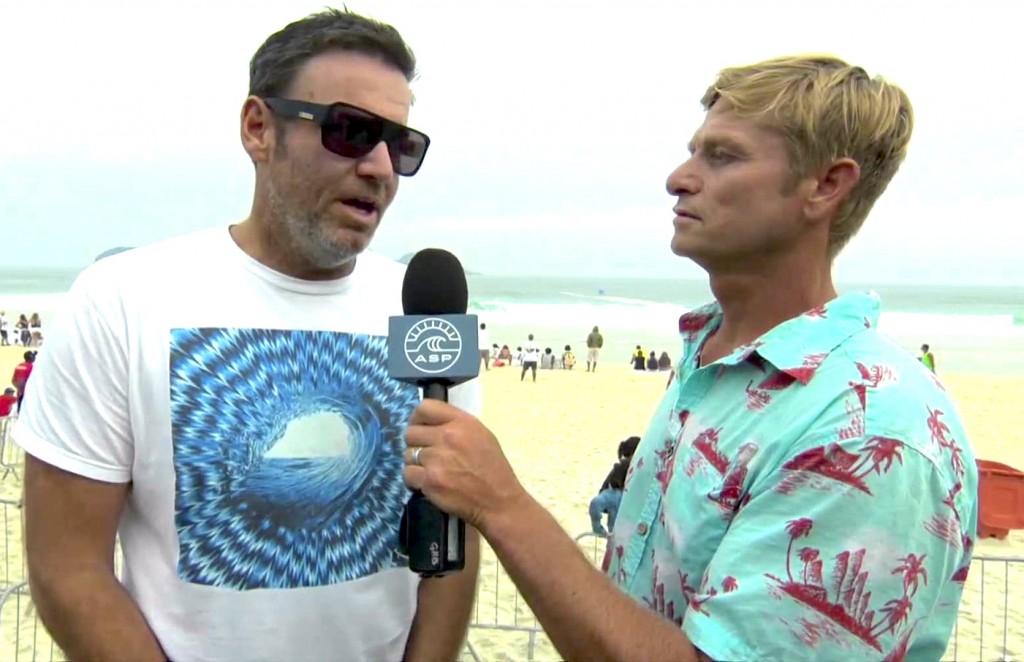Matt Biolos and the 10 things every surfer should know about their pleasure craft…
Everyone rides …Lost surfboards for good reason. The sturdy, hairy man who makes ’em (Matt Biolos) has a connection with the average surfer (and so the boards…forgive) but he can also cross the aisle to the complex world of the professional surfer.
Who else you going to turn to when you want to simplify the game?
1. Boards with a straight rocker paddle faster. And, paddling is 50 per cent of the game. If you can’t catch waves, you can’t surf. Even if you’re surfing two-foot windblown peaks with three friends, you still have to compete to get waves. And, you thought it was all about thickness, right? It’s not; it’s how the bottom moves across the water. However…
2. Volume is your friend. You can have a really thick board, but if you put a vee bottom, it rides neutral, whereas a medium-thickness board with concave can ride flat like a plank.
3.Tail shapes don’t matter as much as you think. If the width going into the tail is the same, a square, a squash, a diamond or a swallow is going to behave in a similar way. Round tails and pintails decrease the rail line, so they’re going to hold a little better and shorten a turn radius.
4. I don’t buy into the whole back-foot/front-foot surfer thing. We’re all surfing from the back foot. You’re either a weak back-foot surfer or a strong back-foot surfer. You push hard or you don’t. You’re either Taylor Knox or a flicky little kid.
5. Look at the outline of your board. Straight lines go fast. Curved lines turn. Simple.
6. The straighter the rocker, the further back you need to stand and boards with a continual rocker have a bigger sweet spot. However, and this is a big however, a drivier board will be more forgiving in picking up speed, just less forgiving when you need to turn.
7. Match the curve of the board to the curve of the wave. This is for the average surfer. Everything goes out the window for pros – they can do anything. I travel with a curvy board and a flat board: curvy boards for the Gold Coast and for Sydney shorebreaks. Flatter boards for mushy points or blown out crumblers. On a planky board, it ain’t gonna work when you need to jump to your feet and bottom turn in one quick move. And, when you do get up, all you’re going to do is parallel floaters.
8. There’s a magic number and it’s called your cubic volume. It’s up to us shapers to educate people, and it’s information available, right now, on our shaping machines. Let me explain. One of my team riders, Shea Lopez, was teasing me about how big my boards are. We were down at Lowers, two fat cocktails in hand, and he grabbed my board and said, “Have a fucking look at this boat!” And, I said: “Well, I’m fat, I’m 40, but you know what, fucker? I bet my volume-to-weight ratio is not far from your’s. I’m 30 per cent heavier and have maybe 30 per cent more volume. The difference is, I’m a desk jockey and you’re a professional athlete.” If we know our cubic volumes, all the other dimensions can be left to the shaper. Instead of saying, I ride 6’1”s x 18 5/8” x 2 5/16”, you’d say, I’m a 42, make me a small-wave craft. This does require a degree of trust in your shaper. Which leads me to…
9. There are two types of shapers you can trust. One is the local shaper who knows the conditions and who probably knows how you surf. That’s a certain kind of trust. Then there’s the trust you have for an international shaper. You trust Al Merrick because he consistently makes great boards for great surfers and for the global market. If you live in Santa Barbara, where Al lives, you get local and international knowledge. If you live on the Gold Coast, you get both: Darren Handley and Jason Stevenson. If you live in Sydney, you get both: James Cheal (Chilli). If you live in San Clemente, you get Timmy Patterson and me. But, if you live in, say, Adelaide, you might have to balance the tradeoff between local and global knowledge.
10. Balance in a surfboard is everything and shapers walk a tightrope every time they build you a custom board. If you want a board with a lot of rocker, your shaper has to build everything around it to balance it out. If one element is extreme, the rest of the board has to act as a counterbalance to neutralize the extreme. Greg Webber was a genius on the wire. Everything is balance.










